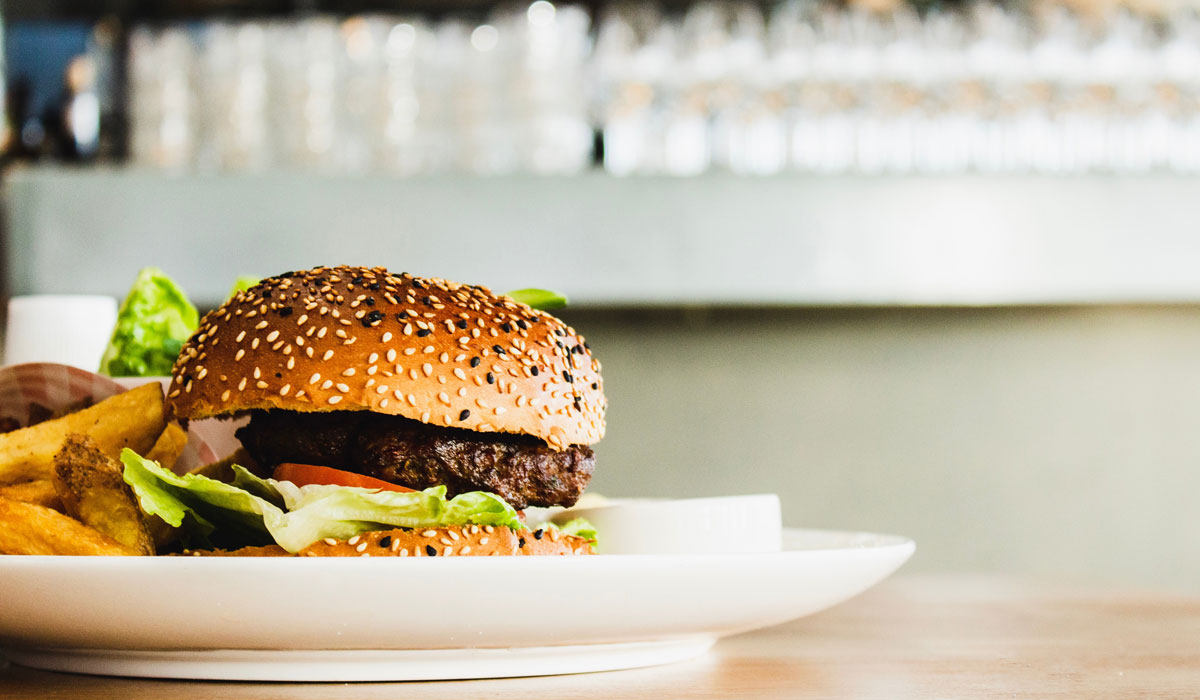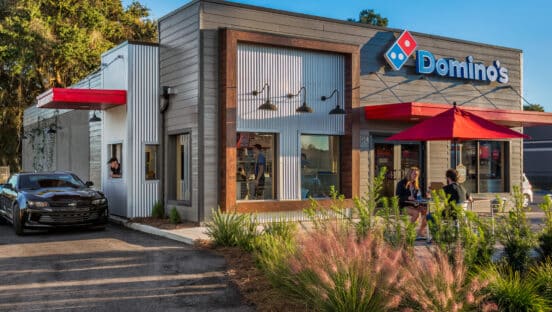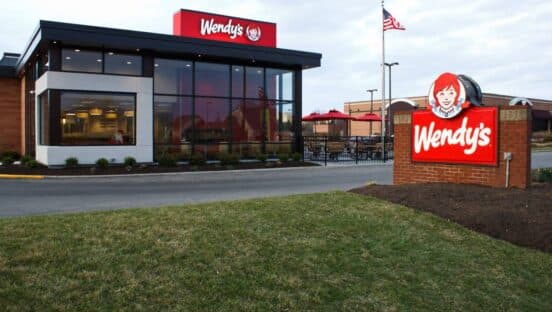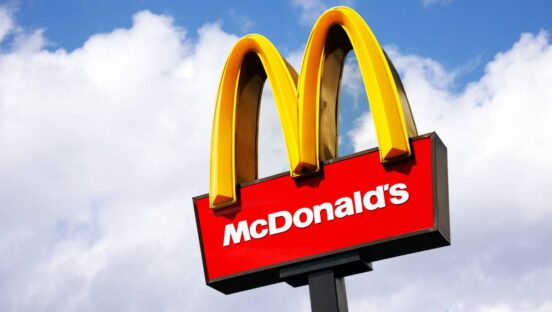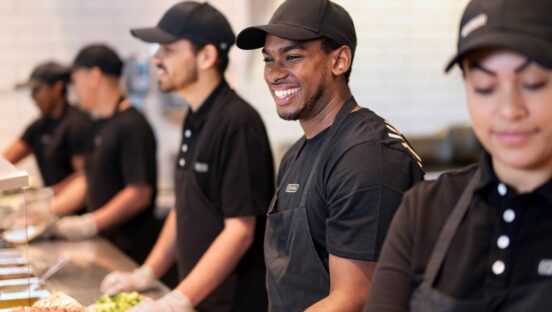The headline is a troubling one: December’s same-store sales growth of negative 2.1 percent was the worst result for the restaurant industry in more than two years. Was it surprising, though? Black Box Intelligence predicted in November the industry would limp down the stretch in 2019. The reason being mostly two-fold—a strong 2.1 percent run in December 2018 to compare against and the calendar shift of Thanksgiving.
Those factors took hold in Black Box’s latest report. “As bad as the month seemed, as we said last month, the top-line growth result is not telling the full story,” said Victor Fernandez, vice president of insights and knowledge for Black Box Intelligence, in a statement. “As Thanksgiving was celebrated so late in the month, it fell into December for 2019 according to the calendar we use for reporting.”
Thanksgiving typically sours restaurant sales, on a broad scale, due to closures and people staying at home. It’s a boon for some (Cracker Barrel) but that’s not the norm.
The real debate, however, concerns whether the shift spotlighted a blip that should be ignored, or whether December’s results suggest a rocky 2020. Fernandez said the first week of the month (where the holiday factored in) resulted in a double-digit percentage point drop in same-store sales. Still, the rest of the weeks of the month also tracked negative. “Coupled with the fact that December of 2018 was strong in terms of same-store sales thus presenting a challenging comparison, December of 2019 was projected to be weak regardless of holiday shifts,” he said.
Stepping back to a broader view, same-store sales growth in Q4 of 2019 showed comps falling 0.1 percent. That’s an improvement of 0.3 percentage points over Q3. Also, calculating same-store sales growth over a two-year period reveals 1.4 percent growth against Q4 2017. The result is the best two-year figure in all of 2019 and the fifth consecutive quarter in which the restaurant industry was able to post positive gains under this longer-term picture.
Over the course of 2019, sales growth for restaurants achieved small positive momentum, Black Box reports. Same-store sales clocked in at 0.1 percent. Importantly, this means restaurants have witnessed positive growth for the last two consecutive years (growth was 0.8 percent in 2018).
Yet can this really be labeled a full-on success? It depends on how you view the sustainability of what’s driving the momentum.
Fernandez said sales growth continues to be “crippled by declining traffic.” The offsetting factor—guest check—has been just large enough to generate some positive results. “Given the traffic challenges facing the industry, stronger and sustained long-term sales growth is really not an option,” Fernandez said.
Just look at December. Same-store traffic fell 5.7 percent, reflecting the negative effect of the Thanksgiving calendar shift. Again, though, this issue extends further. Q4 and 2019 traffic growth rates reinforce the idea that falling guest counts are, along with workforce pressures, the biggest roadblocks facing chain restaurants, Black Box said.
Comparable traffic growth declined 3.4 percent in Q4. Along with Q3 2019, these are the only quarters with traffic growth worse than negative 3 percent since Q3 2017. For the entire year, traffic fell 3.1 percent—a drop of 1.2 percentage points measured against the growth recorded in 2018.
Per Black Box, by the end of Q3, 63 percent of restaurants said it was more difficult to recruit hourly staff versus the prior quarter.
Naturally, this is affecting segments differently. Family dining, fine dining, and upscale casual turned in the best results in Q4. After a challenging 2017, family dining has enjoyed a resurgence of late. Here’s a look at how Bob Evans has embraced a dynamic sector. And how IHOP became America’s largest sit-down chain in recent months.
Fine dining posted three consecutive years of sales growth, perhaps lending credence to the theory that today’s consumer is willing to spend more on experiences.
As Black Box points out, fine dining continues to focus on delivering superior dine-in service while much of the industry shifts toward off-premises business. So, suddenly, fine dining finds itself at an enviable point of differentiation.
“This segment is also driven by expense account users that continue to entertain their clients as a key business strategy,” Black Box said. “The attention to quality and service seems to resonate well with fine dining corporate and personal diners given the positive same-store sales growth achieved by this segment over the last three years.”
Upscale casual also recorded positive sales growth in Q4 but did notice a small dip in sales for the entire year compared to 2018.
By market, out of the 11 regions tracked by Black Box, the Western classification was the only to experience positive same-store sales in December. Texas, New York-New Jersey, and New England took the biggest hit. The latter witnessed a negative 7.64 percent decrease in traffic. In November, 71 percent of local markets reported positive. Just 22 percent did so in December.
While all of this unfolds, staffing difficulties continue to rise for restaurants. After a few months of flat and even improving employee retention, rolling 12-month turnover rates climbed again for hourly employees and restaurant managers during November, according to Black Box’s Workforce data. Turnover remains at historically high levels.
And, once again speaking to a consistent theme throughout 2019, the issue was compounded by the reality it is also becoming increasingly harder to find qualified employees to fill vacancies created by turnover. Per Black Box, by the end of Q3, 63 percent of restaurants said it was more difficult to recruit hourly staff versus the prior quarter; 58 percent said the same of restaurant managers.
This issue spiked at quick-service restaurants, with a higher percentage saying they are having a harder time finding hourly employees and managers than just three months ago.
“As a result, the percentage of restaurant locations that is understaffed is increasing. For an industry that relies heavily on its workforce, this can only mean bad news. Especially when taking into consideration guest sentiment,” Black Box said.
Joel Naroff, president of Naroff Economic Advisors and a Black Box Intelligence economist, said 2020 should mirror 2019 when it comes to the economy. “If you liked 2019, you will enjoy this year. If you were disappointed, then plan accordingly. While the fears of an all-out trade war seemed to have dissipated [and hopefully will not re-emerge], that does not mean the economy is likely to rebound sharply. In the U.S., consumer spending is being restrained by softening gains in wages, even as job growth remains solid and labor shortages continue to plague business. Globally, forecasts are for soft growth in China and Europe to continue.”
“There is little reason to expect a major upturn in business investment,” he added. “Government spending, a prime factor in growth, may be limited by the return of trillion-dollar budget deficits. In other words, there are few factors that would constrain growth significantly or cause it to accelerate sharply. For the restaurant industry, that implies modestly rising demand this year.”
Black Box did caution, however, political instability tied to an election year could challenge operators.

